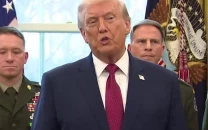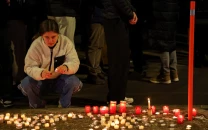Unrest in Kenya: Explained
Anti-government protests have continued in Kenya despite the withdrawal of a controversial finance bill.

Kenya has been roiled by anti-government protests for the past two weeks that included deadly violence and widespread looting in parts of the country.
Protests that were triggered by recent tax hikes have eventually culminated into a call for President William Ruto to resign.
A total of 39 people have reportedly died during the unrest mainly during clashes between Kenyan security personnel and protestors. Ruto’s government puts the death toll at 19.
During the protests, lawmakers first approved a finance bill that included the controversial tax rises.
The parliament approved the controversial finance bill a day after United States President Joe Biden designated Kenya a “major non-Nato ally,” marking the first time a sub-Saharan nation was given the title.
While the bill was being approved at least five people were killed during clashes outside the parliament.
But as the protests intensified, the government initially made some concessions agreeing to abandon proposed taxes on necessities such as break and cooking oil. But the protesters continued to seek the abandonment of the bill as a whole.
A day after the bill was approved by parliament, President Ruto conceded and announced his decision to withdraw the bill.
But the announcement failed to quell the unrest and the protests have continued calling for President Ruto to step down.
But as the demonstrations began to be marred by violence and looting activists leading the anti-government protests reconsidered their approach.
They fear these incidents could undermine their movement's goals of urging President William Ruto to step down.
According to the activists, the violence was orchestrated by "goons" hired by politicians, aimed at discrediting genuine protesters or promoting their own interests.
President Ruto along with several other officials have meanwhile said that the anti-tax protests have been “hijacked by organised criminals.”
Amid the ongoing violence, the Kenyan police, previously labeled by Transparency International as the country’s most corrupt institution, have ramped up their efforts with a heightened crackdown.
Ruto’s political opponent Raila Odinga has criticised the government over the violence.
“I am deeply troubled by the violent and deadly crackdown on young, peaceful protesters exercising their right to peaceful assembly and freedom of expression,” said Raila Odinga, former Prime Minister and leader of Ruto’s opposition.
"I am disturbed at the murders, arrests, detentions and surveillance being perpetrated by police on boys and girls who are only seeking to be heard over taxation policies that are stealing both their present and future," he added.
But political leaders like Odinga are not spearheading these protests.
The younger generation of Kenya, including social media influencers and human rights defenders, are the ones at the helm of these protests.
Amnesty International Kenya said that at least 12 people had been abducted.
“We are now seeing not just abductions but disappearances,” Amnesty Kenya executive director Irũngũ Houghton reportedly told CNN.
Most of the abductions were of prominent leaders of the protest, many of whom were Gen Z influencers and other young professionals.
This marks a shift in the structure of Kenyan activism, with people uniting based on class and specific issues rather than ethnicity.
Kenya has been in desperate need of a plan to lighten their load of debt for a long time, but it has been continuously delayed, due to the COVID-19 pandemic, for example.
This finance bill had aimed to raise an additional $2.7 billion in tax revenue to help reduce Kenya’s severe load of national debt. 37% of the country’s annual revenue is used as interest payments on this debt, and the bill aimed to reduce this.
It appears the discontent that the Kenyans have are linked to the country's other problems including corruption, cronyism, financial mismanagement, and the shadow of colonialism.
The class and ethnic disparity as well as the economic issues are similar to those faced by several developing nations in the world.
Large spread discontent also prevails among the Kenyan youth, who face high unemployment and rising prices, over the lavish lifestyles of the president and other government officials.
The president has made some overtures including an online debate with the protesters that took place on social media platform X on July 5.
He has also pledged to reduce travel and hospitality expenses for his office, aligning with demands from some protesters.
Meanwhile, the protest organisers are holding a series of rallies leading up to a 'national vigil' planned July 7.



















COMMENTS
Comments are moderated and generally will be posted if they are on-topic and not abusive.
For more information, please see our Comments FAQ